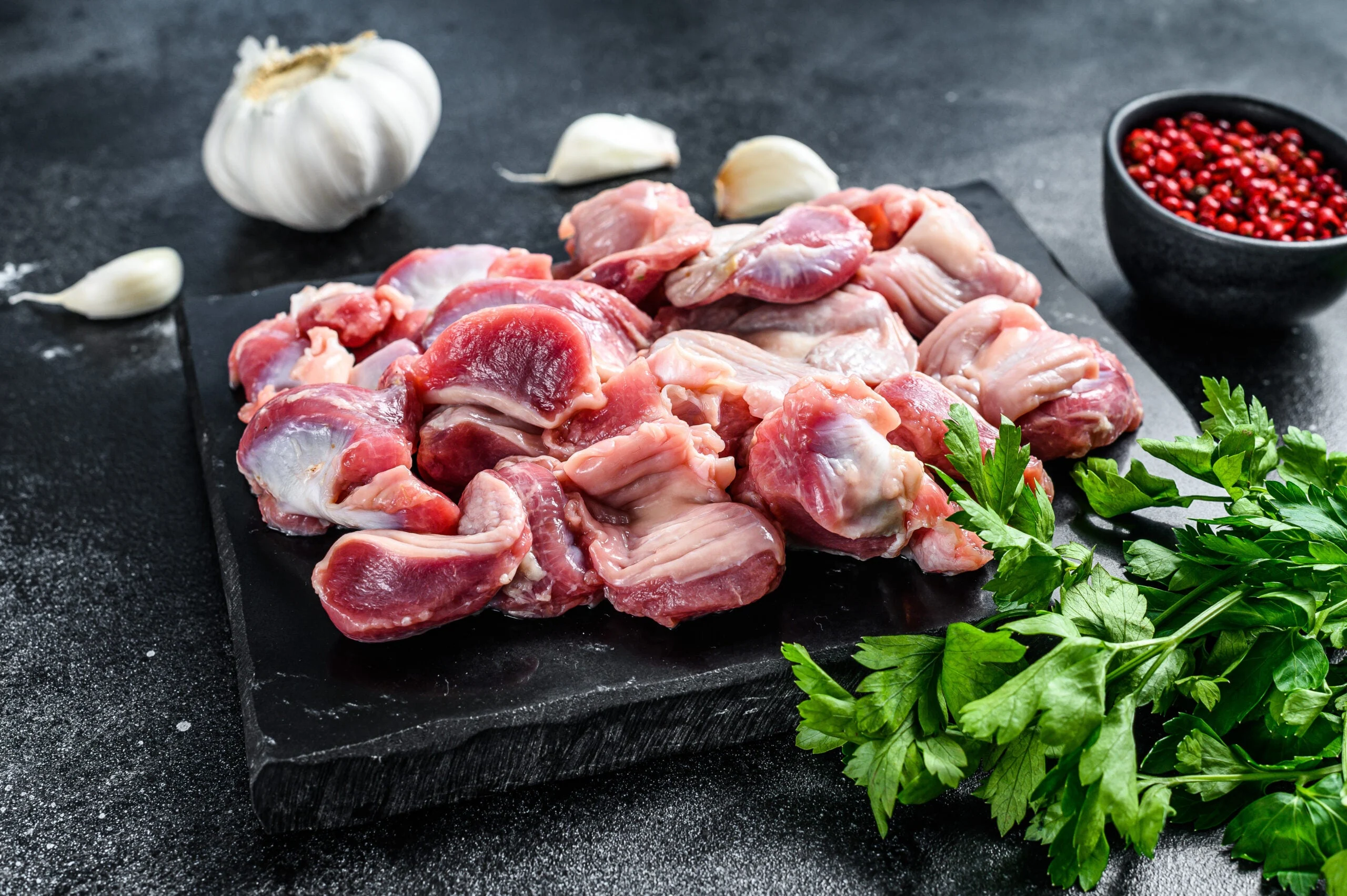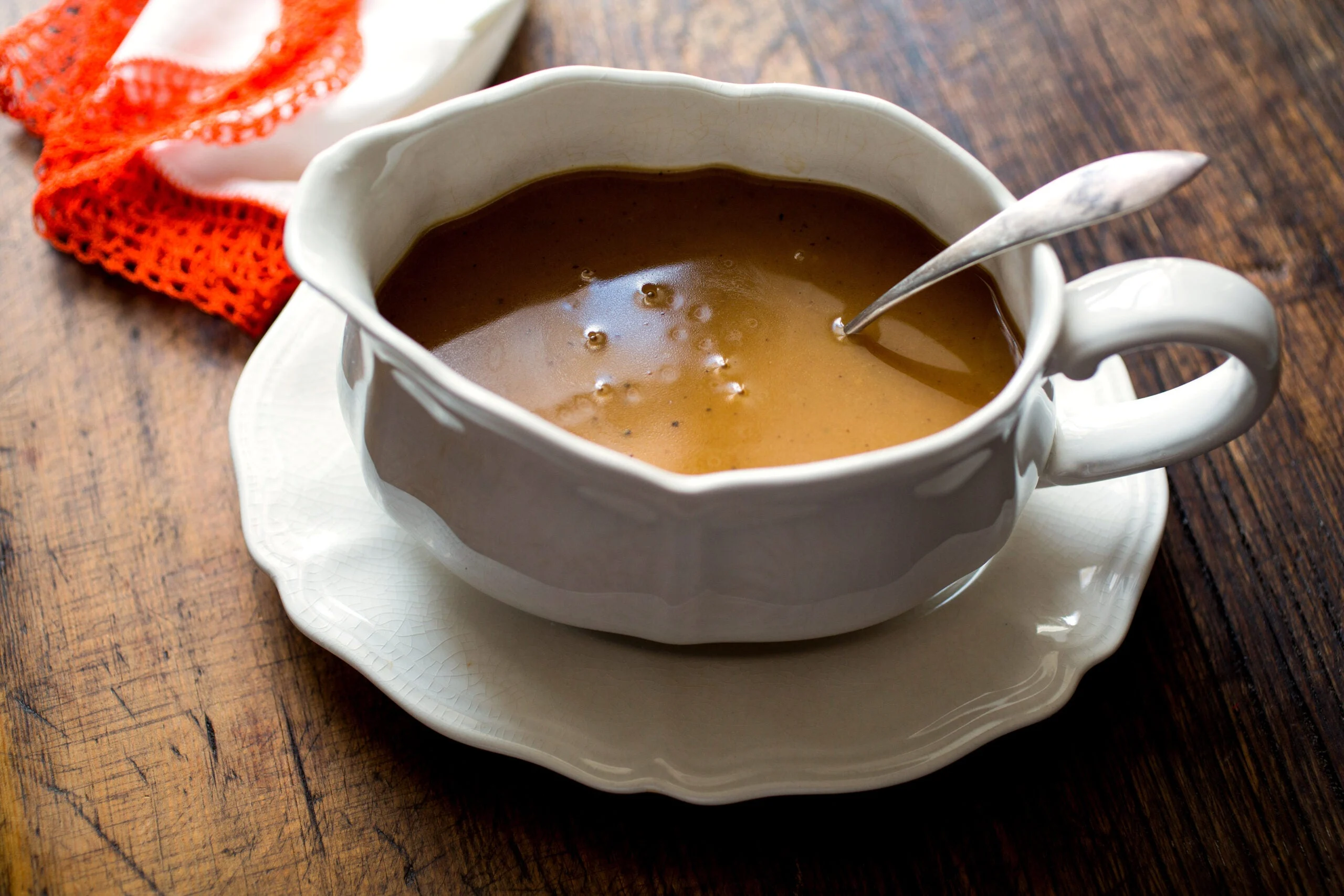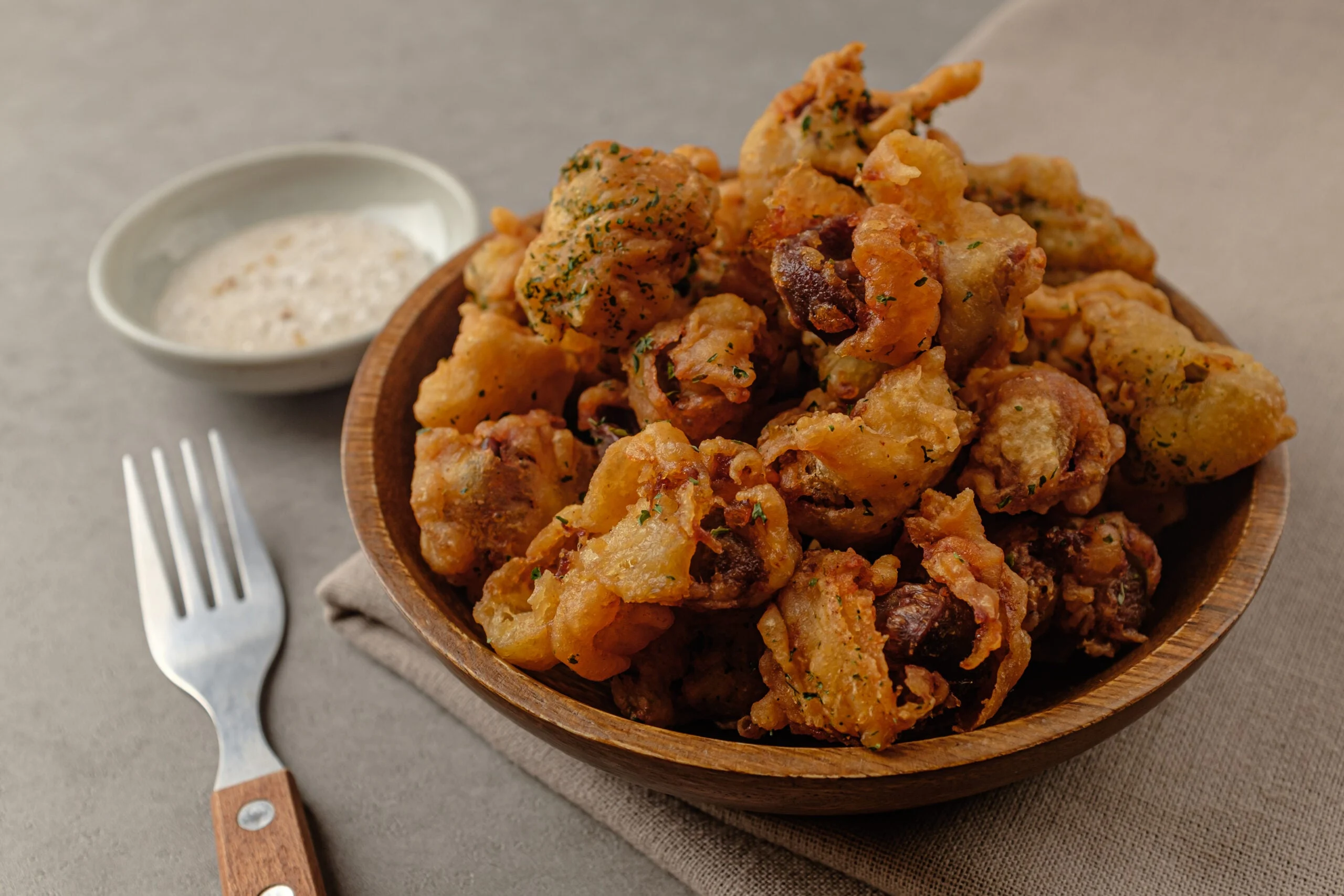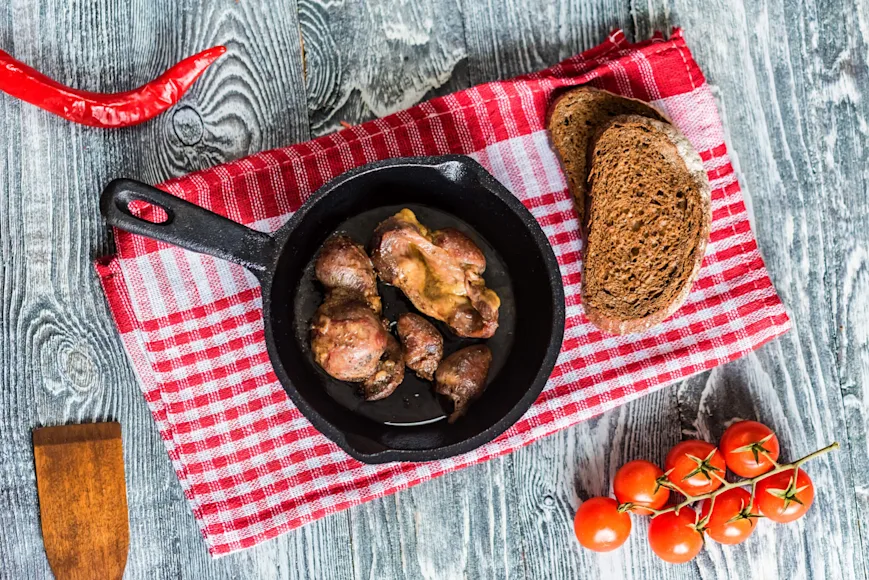If you’ve ever bought a whole chicken or cooked a Thanksgiving bird, you might already know what giblets are. Butchers usually package them all together in the cavity of the bird, and most people notice them when they flop into the bottom of the sink with a wet thud. But what are giblets exactly? They are the heart, liver, neck, and gizzard of a bird, at least in the modern sense of the word. Historically, the word giblet has roots in the hunting world.
“Giblet” comes from Middle English
, but before that, from the Old French words “gibier” and “gibelet.” Gibelet translates to “game bird stew,” and it comes from “gibier” which means “birds or mammals hunted for sport.” Who knows why the English demoted “giblet” to describe only a bird’s less desirable parts? Maybe it was their distaste of French cooking. Whatever the case, giblets should not be underestimated. Whether they’re plucked from a chicken or saved from a wild turkey, giblets can be used in all sorts of ways.
What Are Giblets?
Giblets are edible organs, or offal, and what many consider trash. But keep your foot off of the garbage-opener pedal. Before you toss those wonderful giblets, pause for a moment. Consider the sauces. Consider the pate. Consider the French.
Giblets are more than just a pile of organ meat. They’re the base ingredient of a few dishes that will set your cooking apart. With giblets, you can leave a world of bland breast meat and easy-to-understand drumsticks behind. You can make something more complex, and before you know it, you’ll become more complex. You’ll finally become a real gourmand.
OK, in all honesty, giblets aren’t for everybody. Don’t feel like you’re not a real meat eater if you turn your nose up at a little offal. But you should at least give them a try—or feed them to your dog. And if you’re here, you’re probably curious.
How to Use Giblets

Gizzards need to be cleaned and trimmed before you can use them. Vladimir / Adobe Stock
We’re back at the kitchen sink, and you’re staring at that pile of guts—the giblets. Or maybe you’ve just gutted and butchered a spring gobbler, and you’re wondering, what can I do with all of this other stuff? First, take an inventory.
If you shot your bird in the head and neck like you were supposed to, you’ve probably got an intact heart, liver, and gizzard. If you’re working with domestic fowl, you can include the neck in that pile. The first thing you want to do is clean all of that stuff up. Run the giblets under cold water and pat them dry with a paper towel on a clean plate.
The gizzard is the most complicated of your giblets. It’s a muscle that birds fill with sand and gravel to help digest their food. You do not need the sand and gravel to digest your food, so you’ll want to take a sharp knife, split the gizzard in half, and pull out all of the stuff that doesn’t look like food. There’s also a thick piece of skin inside the gizzard. It looks white and nasty. Fillet that off and rinse the red gizzard meat in cold water again.
Giblet Recipes
Giblet Gravy

How about some giblet gravy on your mashed potatoes? Andrew Scrivani / Adobe Stock
In some households, giblet gravy is a staple. In others, it’s looked upon with disdain. Giblets add flavor and a little texture to gravy. First, boil everything except for the liver in 4 cups of water for 1½ to 2 hours. Add the liver and simmer for a half-hour. Then separate and reserve the liquid and mince the cooked giblets. In a saucepan, melt four tablespoons of butter and stir in 4 tablespoons of flour to make a roux. Add chicken stock to your giblet liquid until you have 2 cups, and stir them into the roux slowly. Add a ½ cup of milk and cook until thickened. Mix in the minced giblets and salt and pepper to taste. Serve, and don’t tell your guests how you made it.
Liver Pate

Homemade liver pate on toast. Alexandr / Adobe Stock
Cognac makes everything better, including liver. So does butter, and they’re both key ingredients in a good pate. Pate sounds fancy, but it really isn’t. Historically, it’s what people made when they didn’t have much, and it tastes pretty good.
For your pate, you’ll want to separate the liver from your giblet pile and save it until you have about a ½ pound of livers from other birds. If you’re hunting, get a freezer bag and save the liver whenever you bring a bird home. If you’re impatient, fill out your liver bag with a few chicken livers from the grocery store.
After you’ve amassed a good liver collection, dice half of a small onion, peel a clove of garlic, and set aside 1½ sticks of unsalted butter. Put the livers, onion, garlic, butter, one bay leaf, ½ teaspoon of salt, and ½ cup of water in a saucepan and simmer until the livers are pink inside. Remove from the heat, place a lid on the pan, and let stand for 5 minutes. Discard the bayleaf and transfer the contents of the pan to a food processor with a slotted spoon. Blend until smooth, then slowly bled in the butter one slice at a time. Blend in 2 teaspoons of cognac and ¼ teaspoon of thyme, and salt and pepper to taste.
At this point, you should have what looks like a strawberry milkshake, just meatier. Pour the mixture into a ramekan or shallow jar and put it in the fridge until it firms up. When your pate cools, spread it on a cracker and put it in your mouth.
Fried Gizzards

You can’t go wrong with a nice bowl of fried gizzards. 성민 정 / Adobe Stock
A fried gizzard is a wonderful thing. In parts of the South and southern Midwest, they are eaten with abandon. They fit right in with ice-cold beer and a football game. And the preparation is pretty simple. As with the pate, you’ll need several cleaned and trimmed gizzards for this recipe. You’ll also need 2 cups of buttermilk and 3 tablespoons of hot sauce to start.
Place the gizzards, buttermilk, and hot sauce in a plastic freezer bag and shake it up. Refrigerate the bag for 1 to 2 hours, then remove the gizzards and dust in a mixture of flour, cayenne pepper, and black pepper. Place them on a baking sheet and refrigerate for 20 minutes, then deep fry in oil until they are golden brown. Salt liberally, crack a cold one, and serve.
Read Next: How to Cook Your Gut Pile
Giblet Dog Treats
So, giblets aren’t for you. That’s OK. Your dog will love them. Just hold off on the rich sauces and butter. Your dog can probably handle raw giblets, but just to be safe, it doesn’t hurt to cook them a bit. Discard the neck bone (do not feed this to your dog), clean out the gizzard, and cut the rest of the giblets into bite-sized pieces. Saute them in a bit of oil or boil with no salt and reserve them in the refrigerator or freezer.
Don’t dole the giblets out all at once. They are high-value treats and should only be given to exceptionally good boys or girls. They are also bargaining chips for coercing a dog to go to the vet or getting them into the bath. If you thought your dog already loved you, you haven’t seen him with a mouth full of giblets—eyes roll back in the head, unstoppable drool, high-rpm tail-wagging. The only problem is, after tasting a giblet, he probably won’t want to eat dog food anymore.






